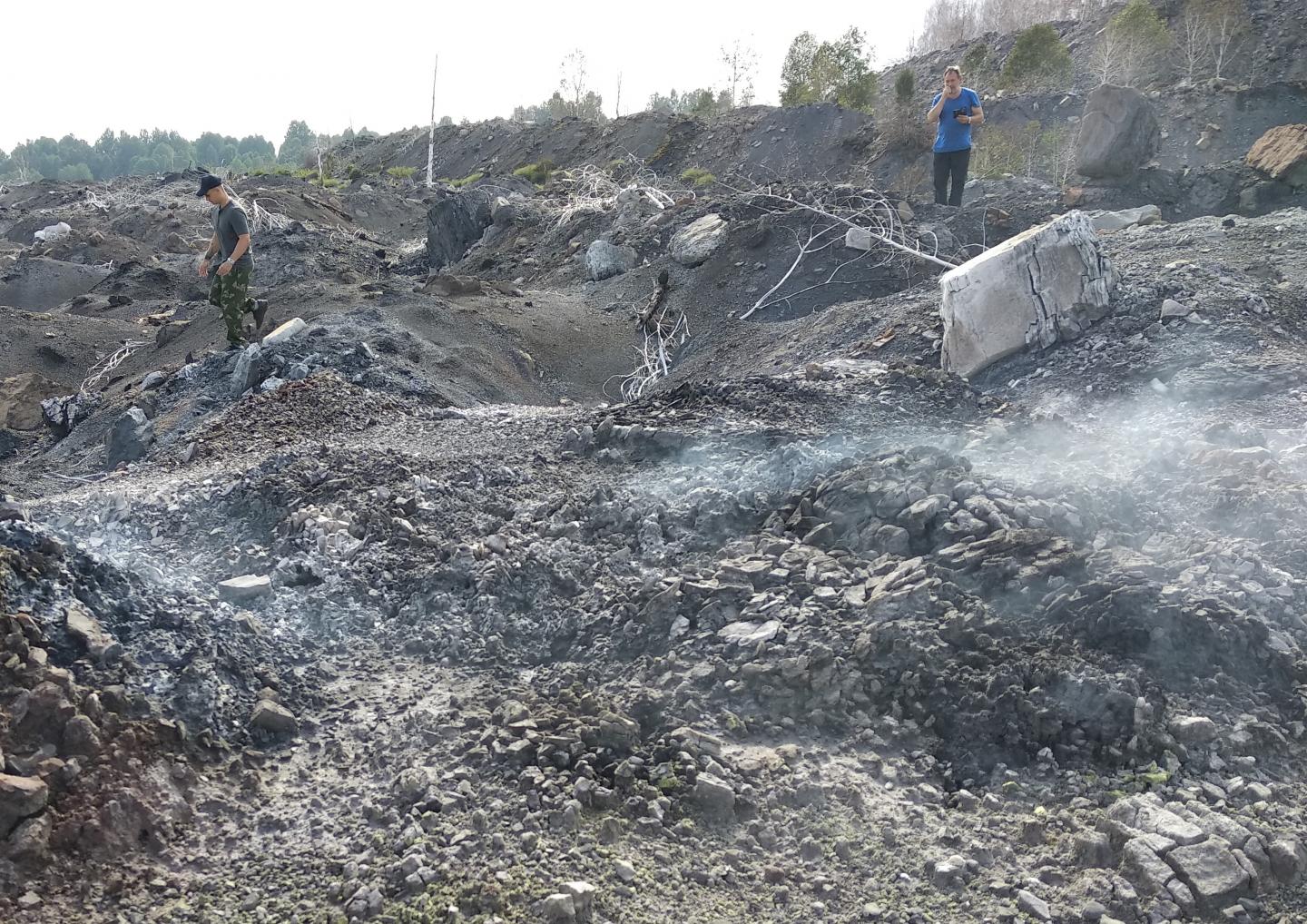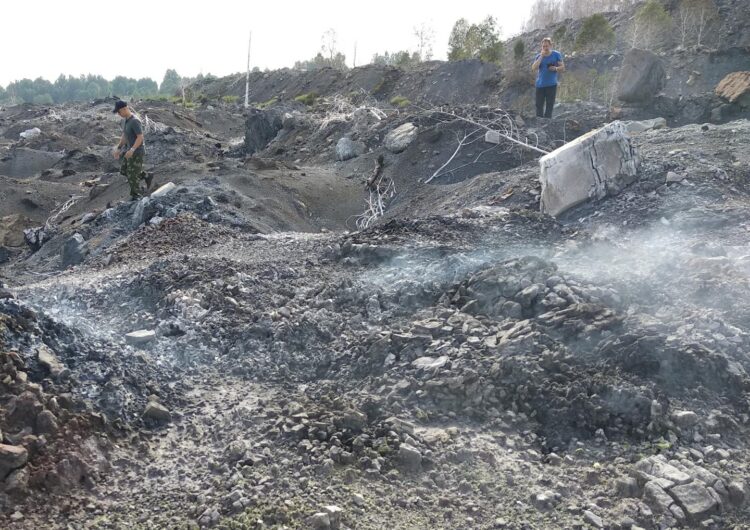Microbes that metabolize substances harmful to humans were found in the burning coal seams of Kuzbass

Credit: Vitaly Kadnikov
Geothermal ecosystems, such as volcanoes and hot terrestrial and deep-sea springs, are characterized by severe conditions. The temperatures are high and the environment could be extremely acidic or very alkaline. Moreover, there are chemically active compounds in them that can be fatal to living organisms, because they are capable of destroying the membrane of an ordinary cell.
“Exclusively very adapted microorganisms can exist here. They do not only have unique protective systems but are also able to get energy from chemical transformations of those substances that are available to them. Humans are actively using the peculiarities of their metabolism, for example some enzymes help biologists to amplify DNA molecules in a test tube,” says Vitaly Kadnikov, Ph.D., senior researcher at the Federal Research Centre “Fundamentals of Biotechnology” of the Russian Academy of Sciences and the principal investigator of the grant from the Russian Science Foundation.
New and so far poorly understood analogs of these natural ecosystems (called simply thermal) are places of hydrocarbon production, that is, oil wells and coal pits. The latter is the research object of a group of scientists from the Federal Research Centre “Fundamentals of Biotechnology” of RAS (Moscow) and Tomsk State University (Tomsk). The authors studied quarries near the city of Kiselevsk, Kemerovo region, and took samples of soil layers from places where there were signs of an underground fire-heated soil, smoke and where steam is coming out to the surface. They characterized the chemical and mineralogical composition of the samples to understand what substances could be used for energy by the bacteria that colonize the coal. Then biologists determined the composition of microbial communities from each layer by analyzing the DNA from it, namely, the gene sequence of one of the ribosome subunits usually used for such purposes.
It turned out that more than a dozen groups of microorganisms live in the Kuzbass quarry, the bacteria mostly. Archaea which are considered to be common inhabitants of extreme ecosystems turned out to be no more than 3%; they are all chemolithoautotrophs converting ammonia into nitrite. The latter compound became “food” for another small group of organisms that metabolize it into nitrate, which people use, for example, as fertilizer.
The representatives of the Chlorobacteria predominated among the bacteria, often found in ecosystems with a high carbon dioxide content; they are also capable of converting poisonous carbon monoxide into CO2. This might be applied for new air purification technologies wherever a furnace is used. Some bacteria found in coal seams can oxidize hydrogen with water formation.
There have also been found microbes that utilize methane as a growth substrate. Many of the identified organisms can fix carbon dioxide and grow autotrophically, but there have been those that feed on the dead remains of their fellows. The Kuzbass quarry turned out to be a well-balanced microbial community, surpassing similar objects studied earlier in China, the US, and Altai in diversity.
“Our research is another step towards understanding how these relatively young ecosystems emerged, what connections they have and whether we can use them. They have much in common with those that form around hot springs. Who knows, maybe they comprise very specific organisms that will help to develop new ways of obtaining valuable biotechnological products by using hydrogen and carbon monoxide generated during coal gasification,” says Vitaly Kadnikov.
###
Media Contact
Elena Sokolova
[email protected]
Related Journal Article
http://dx.





